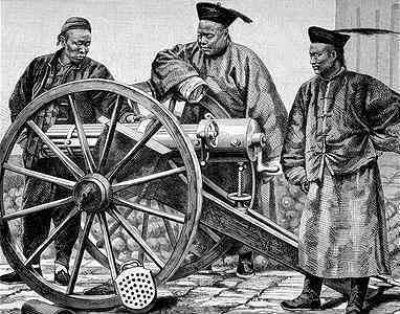Qing Dynasty Military
 Though there were long stretches of peace and prosperity, the Qing Dynasty military was renowned for its ferocity and discipline during the empire’s nearly 300-year reign.
Though there were long stretches of peace and prosperity, the Qing Dynasty military was renowned for its ferocity and discipline during the empire’s nearly 300-year reign.
Eight Banners System
The military's central core was the Eight Banners, which also served other important roles in Qing Dynasty society. This system as created in 1615 by Nurhaci, the man who founded the dynasty. Hong Taiji, his son, then created the Eight Banners.
The Eight Banners system was closely based on the Manchu tradition where soldiers arranged themselves into hunting parties. In addition to the soldiers being registered under the Eight Banners system, their families were registered under it, too.
The system expanded by simply assimilating Manchu bands that had been defeated in battle. Hong Taiji continued the expansion by swallowing up defeated armies.
Symbolism of the Banners
Each of the banners had a flag of a different color. The colors were white, red, blue and yellow. Every other flag had a red border, except for the red flag, which had a white border instead.
The banners were also arranged in a hierarchy with yellow as the highest and the ones bordered with blue as the lowest. The top three banners were commanded directly by the Emperor and only had Manchu soldiers and the Han Chinese who had scored the highest scores on the military exams. The other five banners were commanded by Nurhaci’s royal male relatives.
The Green Standard Army
After the Qing Dynasty was firmly established in 1644, there was another army called the Green Standard Army, named for the color of their flag. Most of the real fighting to conquer China was in fact done by these troops, along with Chinese soldiers who served with the Eight Banners.
Both the Green Standard Army and the Eight Banners were standing armies and the soldiers were paid by the government. Militias were also created as a police force and a force to deal with disasters. They were also paid small salaries and had limited training.
